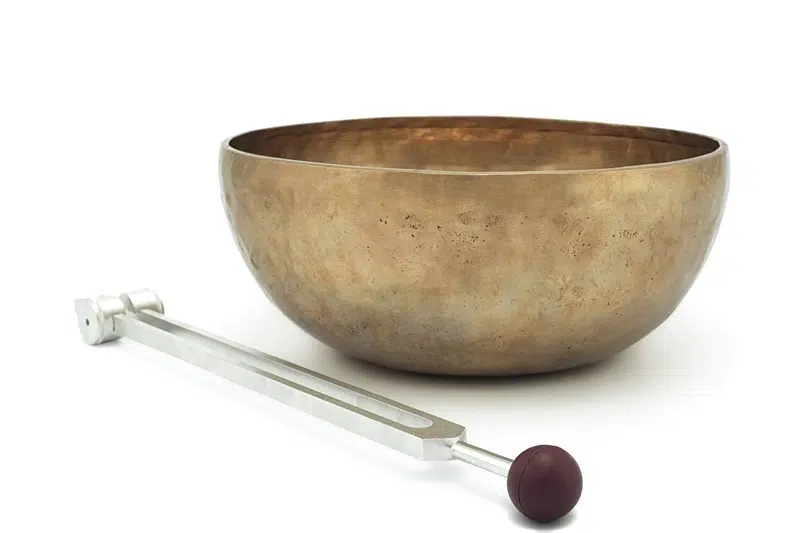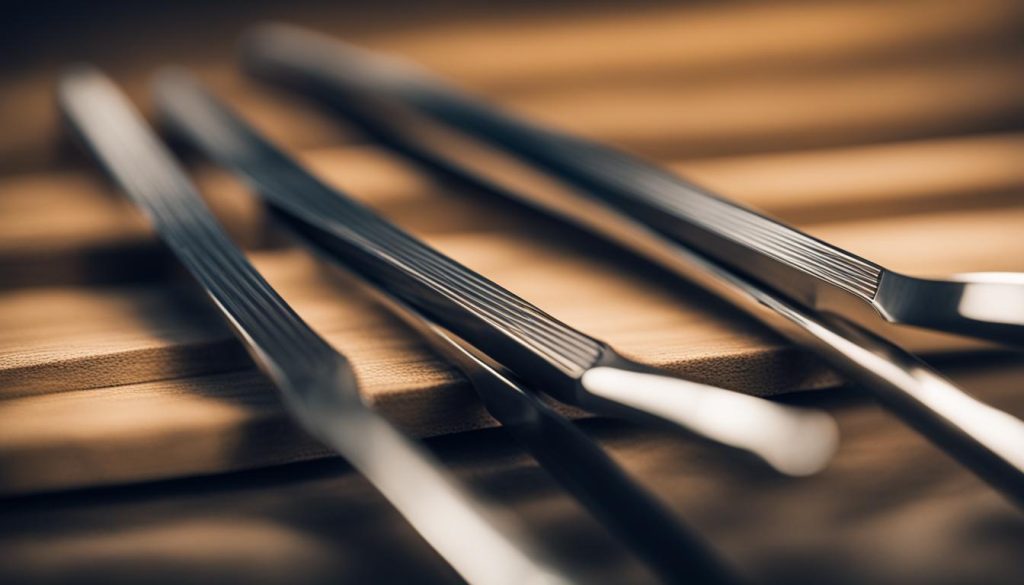Welcome to our informative article on the safety of tuning forks. In this article, I will explore the potential risks, provide useful safety tips, and discuss the precautions to take when using tuning forks.
Many people wonder, “Are tuning forks dangerous?” While tuning forks is generally considered safe, there are factors that can pose risks if not properly addressed.
Whether you are a music enthusiast or someone interested in the therapeutic benefits of these instruments, it is essential to understand the importance of using tuning forks responsibly.

Stay tuned as we uncover the truth about tuning forks and equip you with the knowledge to ensure your safety and well-being when using these fascinating instruments.
Content
Understanding the Basics of Tuning Forks
Tuning forks are fascinating metal instruments that have a variety of uses in different fields, including music, medicine, and energy healing.
These simple yet powerful tools produce a specific pitch when struck, creating a resonant sound that can be both calming and therapeutic.
To ensure the safe and effective use of tuning forks, it’s important to have a basic understanding of how they work and the necessary precautions to take.
When using tuning forks, it’s essential to handle them with care. The metal prongs can be delicate and prone to damage if mishandled or dropped.
Always hold the fork by the stem and avoid striking it too close to your body to prevent accidental injuries.
Additionally, using gloves or other protective gear may be necessary, especially when using tuning forks for medical purposes.
It’s worth noting that each tuning fork is designed to produce a specific frequency or pitch. For instance, some are calibrated to the standard pitch of A440, commonly used in music.
Others may be specifically tuned for healing or energy work. Understanding the intended use and frequency of your tuning fork will help you utilize it effectively.
Remember to store your tuning forks in a safe and secure place when not in use. This will help prevent damage or wear and tear that can affect their performance.
Inspecting your tuning forks regularly is also important to ensure they are in good condition.
If you notice any signs of damage, such as bent prongs or cracks, it’s best to replace them to avoid potential harm or ineffective results.
Tuning Fork Basics at a Glance
| Tuning Fork Type | Common Uses |
|---|---|
| Standard A440 | Music, instrument tuning |
| Healing Frequencies | Energy healing, chakra balancing |
| Medical Grade | Diagnostic tests, sensory evaluation |
By following these safety guidelines and understanding the basics of tuning forks, you can confidently explore the world of sound therapy, music, and healing.
However, it’s crucial to note that if you plan to use tuning forks for therapeutic or medical purposes, seeking proper training or guidance from professionals is highly recommended.
They can provide valuable insights, techniques, and further safety guidelines to ensure the effective and safe use of tuning forks.
Potential Hazards of Improper Tuning Fork Use

While tuning forks are generally safe, it is important to be aware of the potential hazards that can arise from improper use.
Understanding these risks can help ensure your safety and prevent any accidents or injuries.
The following are some of the dangers associated with improper tuning fork use:
1. Accidental Injuries:
Mishandling or dropping a tuning fork can result in accidental injuries, such as cuts or bruises.
The metal prongs of the tuning fork can be sharp and cause harm if not handled with care. It is important to always hold the tuning fork securely and avoid using excessive force when striking it.
2. Worn-out or Damaged Tuning Forks:
Using tuning forks that are damaged or worn out can lead to ineffective results and potential harm.
A damaged fork may produce an incorrect pitch or sound, which can affect the intended outcome of its use.
It is crucial to regularly inspect your tuning forks for any signs of damage, such as bent or loose prongs, and replace them if necessary.
3. Incorrect Technique:
Improper technique can also pose risks when using tuning forks. Each type of tuning fork has specific instructions for use, and it is important to follow these guidelines to ensure safe and effective results.
Using the wrong technique or applying excessive force can not only lead to potential injuries but also diminish the benefits you may derive from the tuning fork therapy.
By being aware of these potential hazards and taking the necessary precautions, you can safely enjoy the benefits of tuning fork therapy while minimizing the risk of injuries or ineffective outcomes.
| Potential Hazards | Precautions | |
|---|---|---|
| 1 | Accidental Injuries |
|
| 2 | Worn-out or Damaged |
|
| 3 | Incorrect Technique |
|
Tips for Safe Tuning Fork Use
When it comes to using tuning forks, safety should always be a top priority.
By following a few simple tips, you can ensure that your experience with tuning forks remains safe and enjoyable.
Whether you are using them for music, therapy, or any other purpose, these precautions will help minimize the risk of accidents or injuries.
Handle tuning forks with care
It is important to handle tuning forks with care to avoid injuries. Remember that the tines of a fork are sharp and can cause cuts or bruises if mishandled.
Always hold the handle of the tuning fork firmly and avoid gripping the tines. When not in use, store tuning forks in a safe place to prevent accidental damage or dropping.
Use protective gear if necessary
In some cases, it may be necessary to use gloves or other protective gear when using tuning forks. This is especially important if you are using tuning forks for medical or therapeutic purposes.
Consult with professionals or follow specific instructions provided by manufacturers to determine if protective gear is required for your specific use case.
Avoid striking tuning forks too close to your body
When striking a tuning fork, be mindful of your surroundings and avoid striking it too close to your body.
The vibrations produced by the tuning fork can be strong and may cause accidental injuries if they come into contact with sensitive areas. Give yourself enough space and maintain a safe distance when using forks.
Follow the manufacturer’s instructions and seek professional guidance
Each tuning fork may have specific instructions provided by the manufacturer. It is important to read and follow these instructions carefully to ensure safe and effective use.
Further, if you are using tuning forks for therapeutic or medical purposes, it is advisable to seek professional guidance.
Professionals can provide valuable insights, techniques, and safety guidelines tailored to your specific needs.
By following these tuning fork safety tips and taking necessary precautions, you can enjoy the benefits of tuning forks while minimizing the risk of accidents or injuries.
The Importance of Proper Training and Guidance
When it comes to using tuning forks for therapeutic or medical purposes, seeking proper training and guidance is of utmost importance.
While they can be used by individuals for personal purposes, it is crucial to understand the techniques and safety guidelines associated with their use.
By obtaining proper training, we can gain valuable insights into the different applications and benefits of tuning forks.
Professionals in the field can teach us how to effectively use tuning forks for various purposes, such as sound therapy, energy healing, and even medical treatments.
They can provide us with the necessary knowledge and techniques to ensure a safe and efficient practice.
Moreover, seeking guidance from experts in the field allows us to avoid potential pitfalls and risks associated with the improper use of tuning forks.
So, are tuning forks dangerous?
Remember, whether it’s for personal use or professional applications, proper training, and guidance are vital when using tuning forks.
They can educate us on the precautions to be taken, the correct handling of tuning forks, and how to prevent injuries.
By investing time and effort into acquiring the necessary knowledge, we can harness the true potential of tuning forks and ensure a safe and effective practice.
